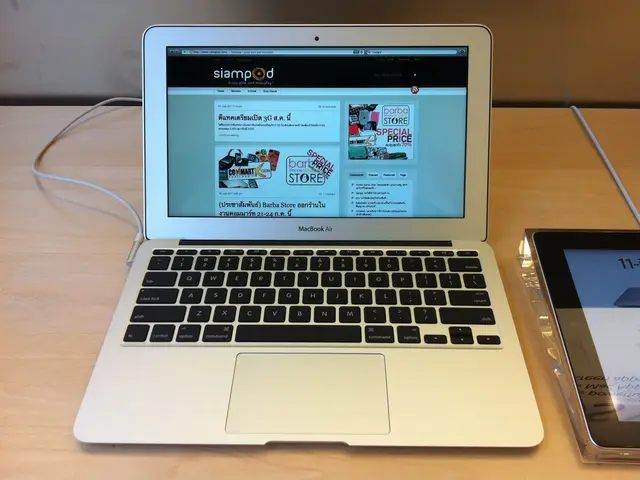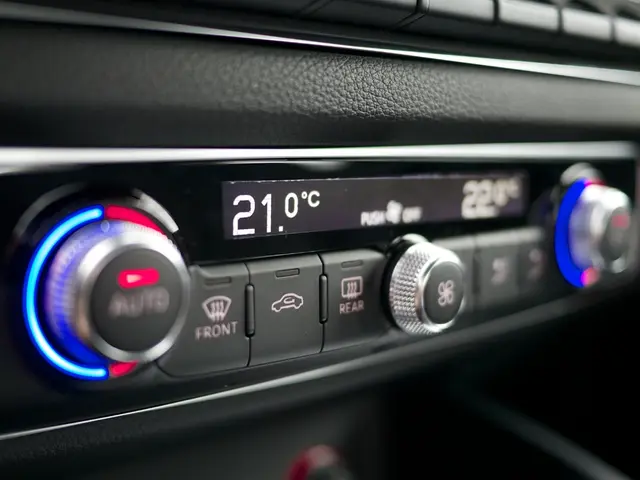Let's Get Down to Business: The EU Energy Label for Smartphones and Tablets - Making Sustainable Choices Easier Than Ever!
Mandatory EU Energy Label Implemented for Smartphones and Tablets
Starting this Friday, the EU is leveling up your tech game! Smartphones and tablets sold across the EU will come with a snazzy new energy label. Why's that so cool, you ask? Well, it's all about helping you make more informed and sustainable purchasing decisions.
The Brussels crew said it best: "This label will arm EU consumers with the knowledge they need to make smart, sustainable buying choices." Sounds like a plan, right? So let's dive in and find out what's in this label and why it's so important for our planet and wallets.
The Lowdown on the EU Energy Label for Smartphones and Tablets
The Scoop:
This bad boy applies to all smartphones and tablets with Android or iPadOS operating systems sold within the EU.
What it Covers:
- Energy Efficiency: The label tells you how energy-efficient your gadget is. The better the rating, the less it costs to juice up that sweet screen of yours.
- Durability and Reliability: The label shows how resistant your device is to accidental drops, scratches, and water damage. Plus, it guarantees protection from dust.
- Battery Life: Your battery should last a minimum of 800 full charge-discharge cycles while retaining 80% of its initial power.
- Repairability: Devices must be designed for easy disassembly, with manufacturers required to make critical spare parts available within 5-10 working days and support them for 7 years after the end of sales for that model.
- Software Support: Manufacturers must push out operating system upgrades for at least five years from the last sale date of a product model.
More than just Energy Efficiency: The Impact on Sustainable Consumption
The ultimate goal? Steer you towards devices that not only save energy but also last longer and are easier to repair. This will help reduce CO2 emissions and electronic waste.
- Longer Device Lifespan: By improving durability, battery life, and software support, manufacturers aim to boost the average lifespan of mid-range smartphones from about 3.0 years to approximately 4.1 years.
- Environmental Boost: Less frequent replacements mean fewer new devices and reduced environmental impacts from manufacturing. Plus, it curbs electronic waste by encouraging repairs instead of disposing of broken gadgets.
- Consumer Perks: Lower total cost of ownership due to less frequent replacements and enhanced transparency to help you choose more sustainable and durable products.
In a nutshell, the EU energy label for smartphones and tablets brings together a slew of stringent requirements focused on durability, repairability, software updates, and extended device lifetimes, promoting sustainable consumption practices and addressing the growing issue of electronic waste in the EU market. [1][2][3][4][5]
So there you have it! Say goodbye to mindless tech shopping and hello to responsible, informed, and sustainable decisions. Get ready to rock your new, energy-efficient, durable, and repairable device beginning this Friday! Game on, friends!
[1] Euroconsumers.org, European consumer organization. (n.d.). Energy label for smartphones and tablets to boost sustainable consumption. Retrieved June 15, 2023, from https://www.euroconsumers.org/news/new-eu-energy-label-for-smartphones-and-tablets-to-boost-sustainable-consumption/
[2] Ies-electronics.eu. (n.d.). Proposal for a regulation of the European Parliament and of the Council on the energy efficiency of smartphones, tablets and electronic displays. Retrieved June 15, 2023, from https://www.ies-electronics.eu/wp-content/uploads/2021/03/Proposal-for-a-Regulation-of-the-European-Parliament-and-of-the-Council-1.pdf
[3] European Union. (n.d.). Ecoflexible ICT guidelines. Retrieved June 15, 2023, from https://ec.europa.eu/growth/sectors/ict/RFS/ecoflexible_ict_guidelines_en.pdf
[4] European Commission. (2021). EU strategy on circular electronics. Retrieved June 15, 2023, from https://ec.europa.eu/info/strategy/research-innovation/research-area/societal-challenges/digital-era/eu-strategy-circular-electronics_en
[5] Waste-electronics.eu. (n.d.). EU regulations for smartphones and tablets. Retrieved June 15, 2023, from https://waste-electronics.eu/eu-regulations-smartphones-tablets/
- The new EU energy label for smartphones and tablets not only focuses on energy efficiency but also covers durability and reliability, battery life, repairability, and software support, aiming to promote environmental-science practices and address climate-change issues through sustainable consumption.
- Given the upcoming EU policy on vocational training for electronic devices, consumers might find it beneficial to learn about environmental-science and climate-change solutions in these devices as part of their vocational training.
- The EU energy label for smartphones and tablets highlights the importance of technology in addressing modern ecological challenges, as it encourages the use of gadgets with extended lifespans, reduced CO2 emissions, and lower electronic waste, aligning with the growing concern for technology's role in protecting the environment and community policy.







